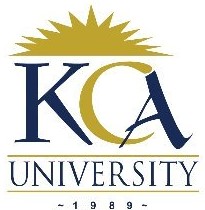
UNIVERSITY EXAMINATIONS: 2017/2018
EXAMINATION FOR THE DIPLOMA IN BUSINESS INFORMATION
TECHNOLOGY/DIPLOMA IN INFORMATION TECHNOLOGY/
DIPLOMA IN BUSINESS MANAGEMENT/ DIPLOMA IN
PROCUREMENT AND LOGISTICS/ DIPLOMA IN EDUCATION/
DIPLOMA IN BANKING/ DIPLOMA IN PROJECT MANAGEMENT
DCU 003: INFORMATION LITERACY
DATE: DECEMBER, 2017 TIME: 2 HOURS
INSTRUCTION: Answer Question ONE and any other TWO Questions.
QUESTION ONE (30 MARKS)
a) Using suitable examples, explain how the following search techniques can be used to
retrieve information. (6 Marks)
i. Boolean operators
ii. Truncation
iii. Nesting
b) Explain FIVE reasons why information literacy is important in higher education in
Kenya and the rest of the world. (10 Marks)
c) Discuss FOUR advantages of selecting sources of information provided by your
university library. (8 Marks)
d) Evaluation of information is part of the research process. Explain in detail what is
involved in evaluating information? (4 Marks)
e) Distinguish between references and bibliography. (2 Marks)
QUESTION TWO (20 MARKS)
a) A library catalogue popularly known as OPAC has many purposes. List and explain any
FIVE purposes. (10 Marks)
b) Discuss possible reasons of including citations and references in an academic essay or
assignment. (10 Marks)
QUESTION THREE (20 MARKS)
a) Define the term information literacy. (2 Marks)
b) Explain knowledge related reasons for referencing in scholarly activities. (10 Marks)
c) Using suitable examples, describe FOUR sources of information suitable for academic
research. (8 Marks)
QUESTION FOUR (20 MARKS)
a) Discuss FIVE possible reasons of including citations and references in an academic essay
or assignment. (10 Marks)
b) What is a journal? (4 Marks)
c) Discuss THREE uses of a journal (especially the e-journals) as a university student.
(6 Marks)
QUESTION FIVE (20 MARKS)
a) Define the term plagiarism. (2 Marks)
b) Explain FIVE types of plagiarism that students may commit when writing academic
assignments. (10 Marks)
c) Provide the procedure of locating electronic resources in your university library.
(8 Marks)
